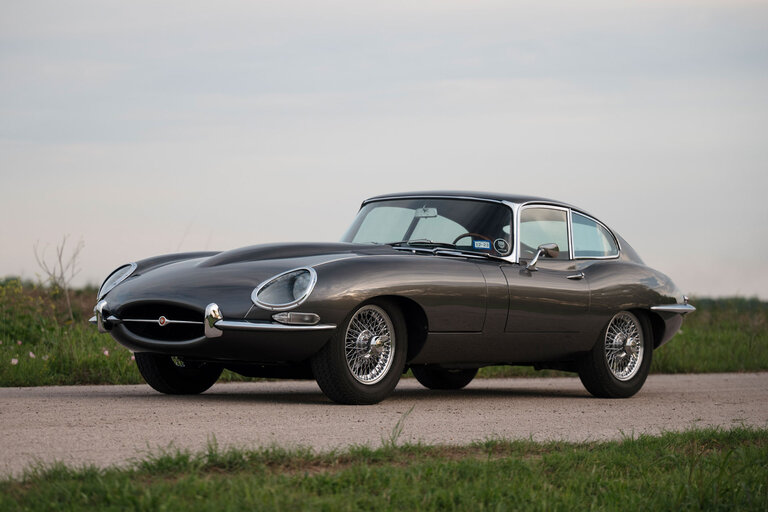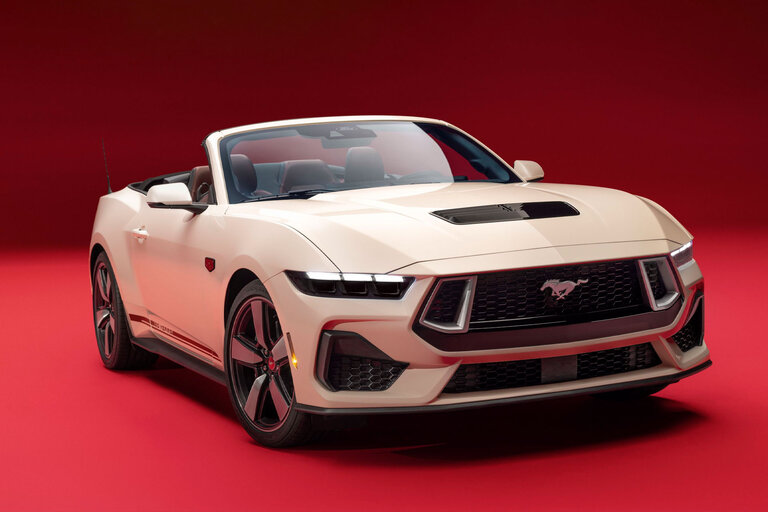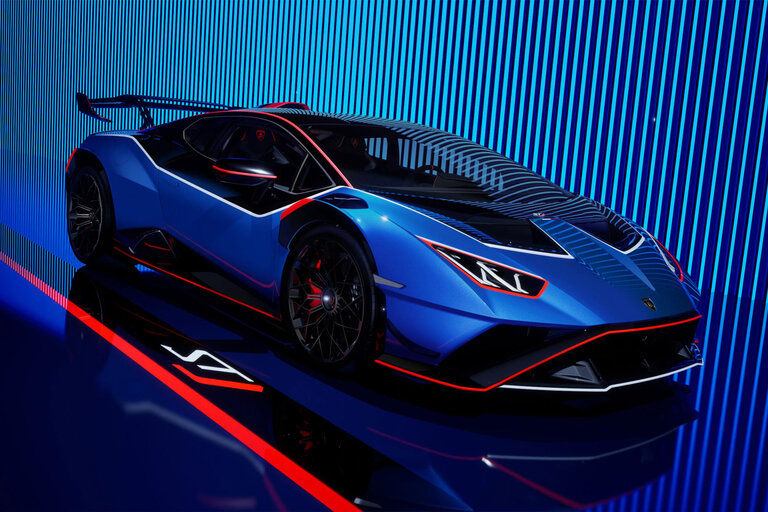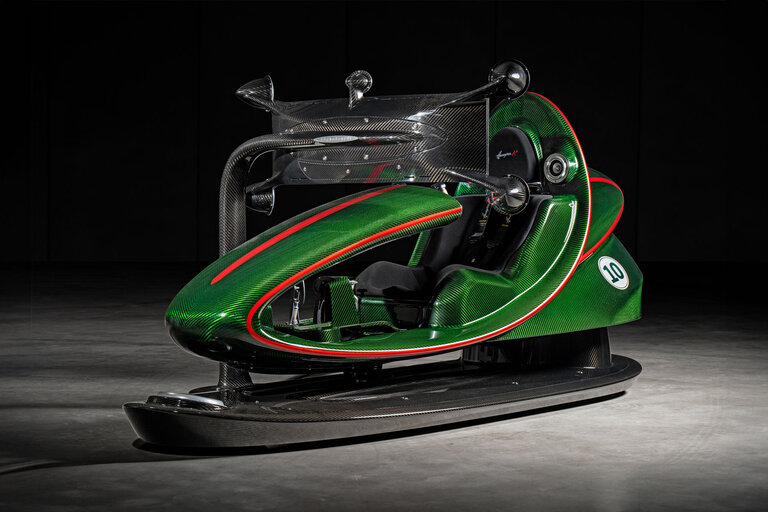
So what is the appeal, one asks? We have already established that it isn’t sex (unless you are very kicky) and no one who can read a specifications sheet is going to assume that the car will dazzle the peasants with straight-line performance. Nor will the Mercedes-Benz pull spectacularly big lateral Gs going around corners. It does have great brakes, and is astonishingly agile for being fully two tons of rolling hardware, but those virtues do not reveal themselves until after you have lived with the car for a time. The agility, particularly, isn’t going to come across during the brief tour that constitutes a “demonstration” at most dealerships. Still, Mercedes-Benz sedans are sold, in numbers and at whopping prices, so the appeal is clearly there.
The answer to all this is not so much in the specifications sheet as it is in human nature. A lot of people buy cars based on what they think the car says about them. They buy a public statement of their position vis-a-vis the rest of the world. And owning a Mercedes-Benz says something like the following: “Here I am and you will observe that I obviously Have It Made, but I have too much taste and knowledge of fine things to be driving a common, vulgar Cadillac or a grossly ostentatious Rolls-Royce.”
Very probably, that’s the underlying reason for the first-time purchase of a Mercedes-Benz. The second time around, people are more likely to buy because experience has made them aware of the several virtues already mentioned—and perhaps a few of which we are not even aware, because we only lived with the new Mercedes-Benz 280SE coupe for a couple of weeks, and were still finding things to like about the car right up to the time the car was returned.
It was good that we were able to accumulate time in the 280SE. Our only previous exposure to the new car, with the all-new 3.5-liter V-8 engine, was very brief and under the highly artificial conditions of a test track. That was in Germany. Now, we have had a chance to drive the car at length under wildly varied conditions.
Our recent experience began with a trip to Reno, where Mercedes-Benz provided a flock of “three-point-fives” for the motoring press to flog. There was a 300SEL (with air suspension) and 280SEs in both coupe and convertible form—all having the new V-8. The 3.5 engine is an extra-dollars alternative to the 2.8-liter Six that is standard in all three models, and you can have the 300SEL with the big 6.3-liter engine. We think we favor the little V-8 option, as it is substantially identical in weight to the Six. With the big V-8, you get another 250 pounds of engine weight right over the front wheels, and unless you are an anvil salesman with a trunk full of samples to haul around, the car gets a tad out of balance.
But enough of that. Our purpose here is to talk about the 280SE coupe mit 3.5-liter engine, as that was the car in which we spent most of our time. Pleasant time it was, too, after a bit of initial strangeness wore off. The strangeness was in the handling, discovered in a flat-out rush up Interstate 80, which leads eastward out of Reno. Nevada has no speed limit on its open roads, so it is possible (if not always prudent) to just bury your foot in it and enjoy. Which we did. And during this exercise noted a curious shifty-on-its-feet feeling about the handling that was not expected and generated some misgivings about the car.
Those misgivings were soon dispelled, for it developed that everything steadied nicely once the 280SE was hauled over into a turn. It was the “radial” tires, of course, which have very limber sidewalk that were the cause—and it is little enough price to pay for radial benefits. These tires are very good in the wet, and give much reduced wear rates—particularly at sustained high speeds—as compared with conventional tires.
You’d have to say that sustained high speeds are just about the name of the game with the Mercedes-Benz. We went out Interstate 80 a solid 20 miles, and returned, and ran all the way flat-out (well, maybe lifting just a touch for the long, sweeping turns.) Zoom! Out, and then (zoom!) back. and the car never gave any indication that it was doing anything strenuous. There was no rise in water temperature; no drop in oil pressure.
That was a fairly convincing demonstration of high-speed capability, with the speedometer (which proved to be quite accurate) reading up around 125–127 mph on the level. Impressive, too, for the quietness at those speeds. The 280SE was, we thought, rather more noisy than one would expect in a $13,430 car at around-town trundling speeds—but the noise level didn’t seem to increase to any great degree with speed.
In fact, what Mercedes-Benz could say of their 280SE 3.5 is that “at 100 mph, the loudest sound you hear is the air-conditioner.” And they could say that even if the rest of the car was clattering away like a sack full of cowbells, because the air-conditioner is noisy. It does the job effectively and only somewhat obtrusively, as long as you don’t need anything more than low-blower strength. If it gets really warm, and you get the blower up on the high end of the rheostat, the unit sounds like it’s going to huff, and puff, and blow the windshield out.
After all the high speed stuff, and while still in Nevada, we took a side trip up to Virginia City—because that is a good place to visit and because the road up there is attractively swoopy and seldom obstructed by traffic. Right there, on that kind of road, is where you can learn to like the 280SE a lot. How can you fail to like it, when it keeps proving that it is your friend? Proves it by going where it is aimed, and agreeably changing direction when asked. You can lift off in the middle of a briskly-taken turn and the tail doesn’t try to swing out, and the moderate understeer stays moderate. A dab at the brake is possible, too, without getting yourself into trouble, and trouble is what you get by the bag trying to brake in the middle of a turn with cars that lack the 280SE’s fundamental balance.
Later in that day, we had a chance at maximum effort. The Mercedes-Benz people had located a skidpad out near Stead AFB, marked off a slalom course and we press types had ourselves a race. Good fun it was, too, especially after they turned on the sprinklers and wet-down the course and gave us a bit of practice going from full-lock slides to the left into full-lock slides to the right. The steering is slow for that kind of work, but it says something for the car that there were only a couple of spins in an entire afternoon of running under the careful eye of Rudolf Uhlenhaut.
As you might expect, Mercedes-Benz had not brought the company’s Director of Passenger Car Development all the way to remote Reno just to give a bunch of reporters a lesson in driving and humility. No indeed. Uhlenhaut was there to tell us about the new 3.5-liter engine, which constitutes the only substantial difference between the 280SE 3.5 and the last 6-cylinder 280SE you may have driven.
Uhlenhaut came perilously near telling us a lot more about the 3.5-liter V-S than we wanted to know, but then we suppose that you can’t expect thorough engineering without suffering the explanations of a thorough engineer. And he was thorough, leading us past such items of information as the ignition energies required to fire a stoichiometric air/ fuel mixture on the way to the main fact of the case which was that Mercedes-Benz has lavished a lot of time and talent on this new engine.
One point that was stressed was that the engine had to meet the requirements of both the European and American markets without there being much difference between domestic and export versions. Uhlenhaut mentioned that for Europe it is necessary to have good mid-range power along with a very solid output at maximum revs, as well as the “ability to tolerate continuous full power and full speed operation.” Also, relatively low fuel consumption rates and moderate displacement. These last items are of importance in Europe because of the high cost of gasoline and taxes based on engine displacement. Neither of these really applies here in America. People who can spend nearly $14,000 for a car aren’t likely to give much thought to what it costs to fill the tank-and a good thing, too, as hard driving pulls mileage down to about 10 mpg. And, of course, any taxes one might have to endure with the ownership of a car relates almost entirely to the price.
All things considered, we’d have to say that the choice of a 3.5-liter displacement is unfortunate from the strictly American point of view. The new engine could as easily be 5-liters (it was originally designed for 4.5-liters, then destroked) and it would be a better engine for us with another 1500cc of displacement. At its present size, it is a trifle over-worked and Mercedes-Benz has made up the difference with axle ratio. So you get a car that twirls its engine 3000 rpm to go 60 mph and eats just as much fuel getting from here to there as a bigger, slower-turning engine without having the bigger engine’s low-speed muscle.
There are times, you will find, when that lack of displacement-supplied muscle really makes itself felt, because there are times when the engine just doesn’t get as much help as it might from the 4-speed automatic transmission. This gearbox, we are told, operates with a high degree of mechanical efficiency. That’s fine. We’re delighted to hear it. but we do wish that the transmission gave more attention to what the driver wants even if it costs a couple of horsepower. Get the car really moving and it all works well enough, but there are times. when driving around in traffic—that one wishes for an automatic downshift when none is forthcoming; and there are other times when the transmission seems to be hanging onto a gear out of sheer perversity and well after one begins to wish that it would opt for the next higher ratio. And. finally, there are plenty of times when one wishes for the accustomed torque-demand characteristics of the modern fluid torque converter-which begins to multiply torque instantly upon the application of throttle. and gives you the effect of an instant infinitely-variable downshift. There is none of that with the Mercedes’ straight-blade fluid coupling.
Now if you want to drive the 280SE, you can do little tricky-bits with the gear selector lever and throttle that really makes it all get together. We discovered that you can even pull smooth downshifts by blipping the throttle as you notch the lever back. It all makes us wonder if perhaps Uhlenhaut has not had too much to say about the way Mercedes-Benz passenger cars operate. He is himself an excellent driver, who likes to drive. and he appears to have arranged the 280SE for himself. All of which means that you will like it too if you are also a good driver who likes to work at driving and appreciates that fine difference between what you want the car to do and what it decides on its own. Many drivers are served better by having the shifts made for them, and most drivers prefer it that way.
There is one area in which Mercedes-Benz cannot be faulted. and that is in the work they have done to make the car A) meet the 1971 California emission standard: and B) drivable. These things do not always go together. as we have said many times before. Most particularly, they have not gone together when a Bosch electronic fuel-injection system was involved, as most of the Bosch equipped cars in our experience have had a tendency to hesitate coming of[ of closed throttle. The problem, as explained by Uhlenhaut, was that when the throttle was opened suddenly the air started moving more quickly than the fuel. which caused a momentary ultra-lean mixture condition. The new 3.5 V-8 has Bosch electronic injection, instead of the traditional diesel-type Injector pump (which, Uhlenhaut says, does not control the mixture finely enough at low speeds and light loads to meet the air-pollution standards) and it would probably have the stumbles, too, except for a very ingenious “fix.” The throttle linkage connects with a device that signals the magic-box to make the injectors squirt a dollop of fuel as the throttle opens, just like there was an accelerator pump, and eliminates the stumble.
Other controls, umpteen of them, sense air density and engine temperature and load and engine speed, and the magic-box (which is full of transistors and other such mysterious electrical devices) adjusts the rate of injection. Bosch explains the whole thing in a 16-page booklet which you can probably get from them if you’re really that curious; we won’t try to cover it wire for wire and pipe for pipe here. It is enough to say that it truly does the job. The 280SE 3.5 starts without fuss, and quietly adjusts itself as the engine warms and makes other adjustments for altitude and anything else that is needed.
Similar close attention to detail is to be found throughout the .engine, with overhead camshafts, sodium-cooled exhaust valves, special hard-surfacing applied at the valve seating areas and the elaborate care taken to insure that oil gets to all of the myriad places that need oiling, et cetera, ad infinitum. Of course, it can be argued that such measures are not really necessary-that a fistful of pushrods and some stamped rockers would quite adequately replace the M-B engine’s overhead camshafts and that a lot of the trick stuff wouldn’t be needed if the engine was bigger and slower turning. Those things may be true, but that’s not the way it is done at Mercedes-Benz and that’s not what made the Mercedes-Benz reputation.
And the same kind of philosophy applies to the entire automobile. It may be that the Mercedes-Benz does not ride better on our mostly smooth roads for having an all independent suspension. It may be that disc brakes at all 4 wheels and rather hard brake pads, made to pull the car down from 125 mph at the expense of some squealing at low speeds, constitute engineering overkill in American context. It may even be that there is too great a penalty paid in weight and cost in making the car as solid as it is, and that the net result of all the expense and effort does not really make the Mercedes-Benz function appreciably better than other cars selling for something like half the price, All of those things may be true, and probably are—in purely practical terms. But in the greater sense, there is some justification for excellence for its own sake, and that is what the Mercedes-Benz represents. Commodore Vanderbilt would have understood about the Mercedes-Benz: if you feel obliged to quibble over the price, to seek a $13,430 justification, you probably can’t afford the 280SE 3.5, and wouldn’t appreciate what you had if someone gave you the car.
This content is created and maintained by a third party, and imported onto this page to help users provide their email addresses. You may be able to find more information about this and similar content at piano.io
Source link






